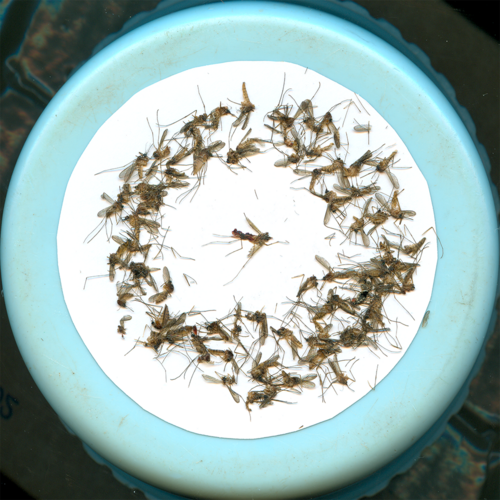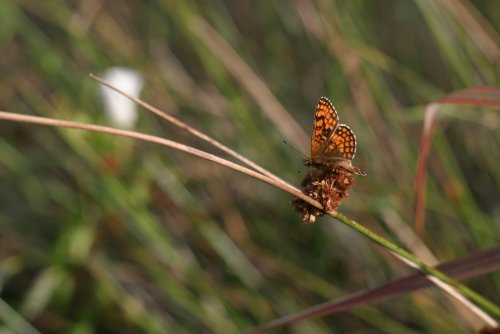GRANDE-BRETAGNE – Le colza, une plante hautement contaminante
Publiée récemment par le Ministère de l’Environnement, de l’Alimentation et des Affaires rurales (en anglais DEFRA), une étude portant sur le colza transgénique, démontre que, du fait des abeilles, le pollen peut être disséminé jusqu’à 26 kilomètres de sa culture d’origine [1]. [2] L’autre conclusion est qu’un agriculteur, ayant cultivé du colza transgénique, ne peut pas produire du colza non OGM (avec un taux de contamination inférieur à 1%), pendant une période de 16 ans.
INFORMATION BULLETIN
Department for Environment, Food and Rural Affairs
Nobel House, 17 Smith Square, London, SW1P 3JR
Four Defra-funded research studies (three concerning gene flow from GM crops and the fourth into the effect of farm management on wildlife) are now available on the Defra website at http://www.defra.gov.uk/environment… (these reports are not the results of the farm-scale evaluations of GM crops).
All of these are being forwarded to the Government’s statutory advisers on GM crop releases – the Advisory Committee on Releases to the Environment – so that they can advise on their implications for current, pending and future releases of GM crops.
They will also be passed to the reconvened GM Science Review Panel for their consideration (for more details see http://www.gmsciencedebate.org.uk).
The four research reports published today are :
1. « Quantifying landscape-scale gene flow in oilseed rape (RG0216) »
This project was commissioned from the Scottish Crops Research Institute to examine the regional nature of gene flow in oilseed rape and its implications for crop purity. The main results of this project have already been published separately (see www.defra.gov.uk/environment/gm/research/epg-rg0216.htm for a full list). This study suggests that for oilseed rape :
(i) The amount of pollen-mediated gene flow rapidly declines over tens of metres from the pollen source,
(ii) Gene flow from a large area of plants to a neighbouring field of fully fertile plants is of the order of 0.1% (one seed in a thousand contains DNA from both crops) and
(iii) Long distance pollen-mediated gene transfer can occur, but that this is rare. This means that relatively small separation distances can reduce impurity through cross-pollination in fields of fully fertile oilseed rape to low levels (around 0.1%, or below), but that complete (100%) purity cannot be maintained by geographical separation.
The study provides evidence of some pollen-mediated gene flow to ’bait plants’ over a distance of 26 km. Non-GM, male-sterile oilseed rape plants (so-called bait plants) were predominantly used in this study to help detect gene flow (as these plants rely on pollen from a male fertile oilseed rape variety for fertilisation). This study provides evidence that insects are predominately responsible for cross-pollination in oilseed rape. It also suggests that bee-to-bee contact in the hive is an effective means of dispersing pollen through the foraging area of a bee colony.
2. « The potential for oilseed rape feral (volunteer) weeds to cause impurities in later oilseed rape crops (RG0114) »
This study was carried out by the Central Science Laboratory and the Scottish Crops Research Institute. It examines whether oilseed rape (Brassica napus) could persist in the environment as feral (volunteer) weeds, for long enough, and in high enough numbers, to cause impurities in later crops.
Particular attention was given to the possibility of GM ferals affecting the purity of subsequent non-GM crops. The study uses information on the life-cycle biology of oilseed rape (mostly from non-GM oilseed rape crop plants) that has already been published to model how long feral populations from an oilseed rape crop would persist under different management practices.
The model considers a typical rotation of winter oilseed rape followed by two years of winter wheat over a period of 18 years. The rates of decline in feral oilseed rape population densities predicted by the modelling were consistent with the results of field studies. The model indicates that an impurity threshold of 1% could be met within reasonable timescales (e.g. five years) but only if feral oilseed rape plants are rigorously controlled i.e. they aredestroyed before they set seed. If no attempt to control feral oilseed rape plants is made, the model predicts that the presence of the original variety in subsequent crops would not fall below 1% for 16 years.
The predictions made in this project will be compared to the persistence of feral oilseed rape populations left by GM herbicide tolerant varieties in the Farm-scale Evaluations.
Early indication of the results of this project led to Defra, in July, advising farmers involved in FSEs to avoid growing non-GM oilseed rape on the same sites owing to the risk of contamination by persistent volunteers (See Defra press notice 311/03).
The project does not indicate that GM varieties persist longer than non-GM varieties of oilseed rape. The GM trait however, allows the persistence to be accurately measured for the first time.
3. « Monitoring gene flow from GM crops to non-GM equivalent crops in the vicinity (EPG 1/5/138). Part 1 : Forage Maize »
This study, carried out by the Central Science Laboratory and the Centre for Ecology and Hydrology, monitored gene flow from genetically modified (GM) crops to djacent non-GM equivalent crops. It was undertaken to validate assumptions made in the original risk assessments concerning gene flow from GM plants. Gene flow was monitored at the farm-scale evaluation (FSE) sites of fodder maize crops.
Overall, results showed that there was a rapid decrease in the rate of cross-pollination within the first 20m from the donor crop and beyond this distance the rate of decrease was much slower. There was significant variation in levels of GM/ non-GM cross-pollination between sites in each year, although the variation between years across all sites was not significant.
Results from individual fields was related both to wind direction during the flowering period, synchrony of flowering between the two (GM and conventional) crops and to separation distances between the crops.
Evidence of low level gene flow was detected, beyond both the 80m and 200m separation distances recommended for forage maize and sweetcorn respectively. However the report concludes that a separation distance of only 24.5m would be required to meet the 0.9% threshold recommended by the EU, and that the 80m seperartion distance recommended by SCIMAC would be sufficient to ensure that cross-pollination levels were below 0.3%. These findings are in-line with expectations based on previous work.
4. « Modelling the effects on farmland food webs of herbicide and insecticide management in the agricultural ecosystem »
This project is a review of information relating to the effect of crop management on farmland birds. It attempts to gather information to predict how changes in crop anagement might affect birds. The project was commissioned from the University of East Anglia by Defra with a specific view to assisting the interpretation of the GM crop farm-scale evaluation results. The FSEs did not study birds directly, but they did study bird food resources. This project develops the methods for predicting how changes in bird food resources will affect birds themselves.
It is equally applicable to changes in crop management associated with any farming system – not just GM. It will therefore be of wider interest to conservationists.
The study will be made available to ACRE when they are asked to advise government on the implications of the farm-scale evaluation results, following
publication on 16 October.
[1] Télécharge le rapport : http://www.scri.ac.uk/scri/file/EPI/Agroecology/Landscape_scale_geneflow_in_oilseed_rape_rg0216.pdf
[2] Dans le journal Inf’OGM n°46, nous mentionnons alors 16 km : il s’agissait d’une erreur.











